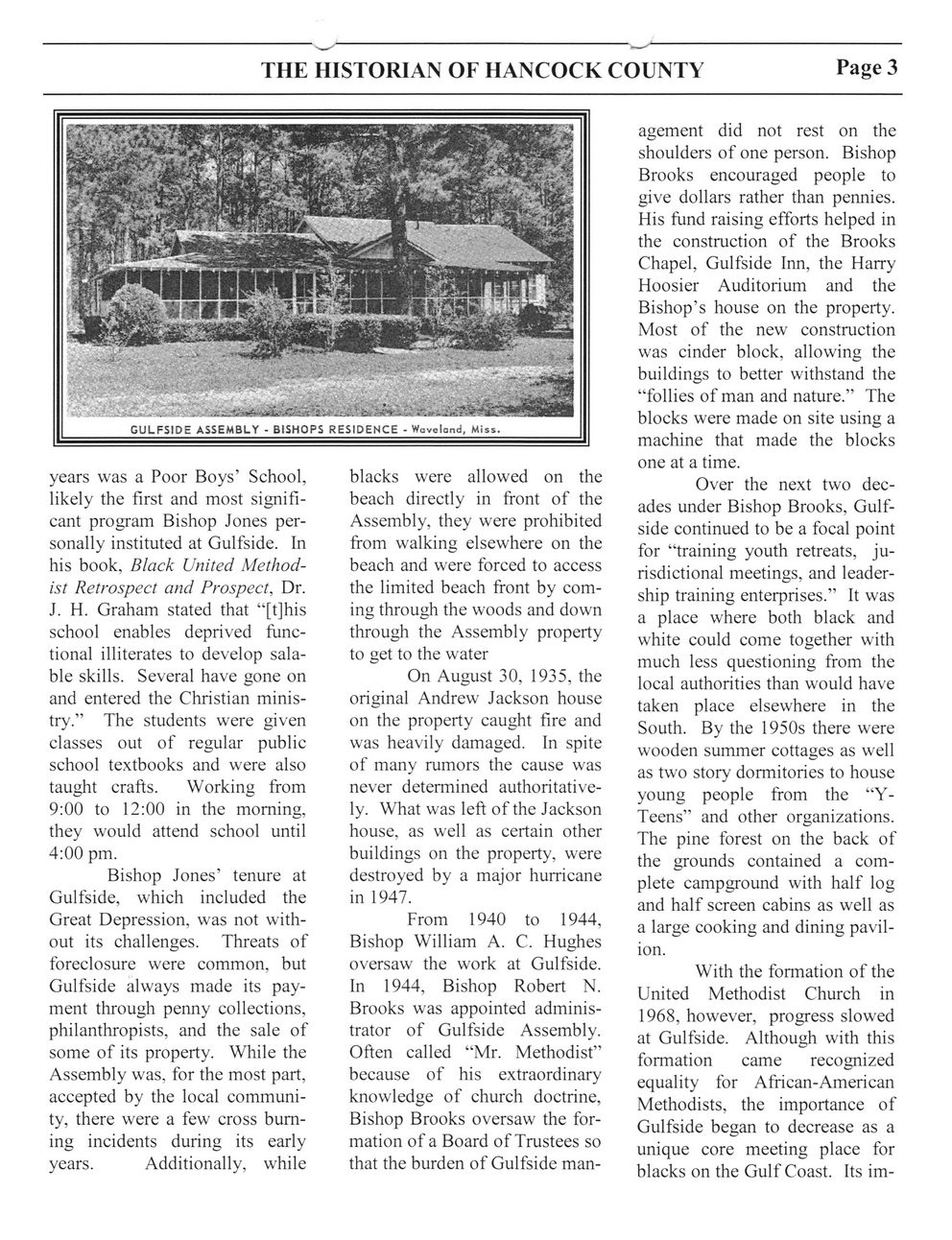This text was obtained via automated optical character recognition.
It has not been edited and may therefore contain several errors.
THE HISTORIAN OF HANCOCK COUNTY Page 3 years was a Poor Boys’ School, likely the first and most significant program Bishop Jones personally instituted at Gulfside. In his book, Black United Methodist Retrospect and Prospect, Dr. J. H. Graham stated that “[t]his school enables deprived functional illiterates to develop salable skills. Several have gone on and entered the Christian ministry.” The students were given classes out of regular public school textbooks and were also taught crafts. Working from 9:00 to 12:00 in the morning, they would attend school until 4:00 pm. Bishop Jones’ tenure at Gulfside, which included the Great Depression, was not without its challenges. Threats of foreclosure were common, but Gulfside always made its payment through penny collections, philanthropists, and the sale of some of its property. While the Assembly was, for the most part, accepted by the local community, there were a few cross burning incidents during its early years. Additionally, while blacks were allowed on the beach directly in front of the Assembly, they were prohibited from walking elsewhere on the beach and were forced to access the limited beach front by coming through the woods and down through the Assembly property to get to the water On August 30, 1935, the original Andrew Jackson house on the property caught fire and was heavily damaged. In spite of many rumors the cause was never determined authoritatively. What was left of the Jackson house, as well as certain other buildings on the property, were destroyed by a major hurricane in 1947. From 1940 to 1944, Bishop William A. C. Hughes oversaw the work at Gulfside. In 1944, Bishop Robert N. Brooks was appointed administrator of Gulfside Assembly. Often called “Mr. Methodist” because of his extraordinary knowledge of church doctrine, Bishop Brooks oversaw the formation of a Board of Trustees so that the burden of Gulfside man- agement did not rest on the shoulders of one person. Bishop Brooks encouraged people to give dollars rather than pennies. His fund raising efforts helped in the construction of the Brooks Chapel, Gulfside Inn, the Harry Hoosier Auditorium and the Bishop’s house on the property. Most of the new construction was cinder block, allowing the buildings to better withstand the “follies of man and nature.” The blocks were made on site using a machine that made the blocks one at a time. Over the next two decades under Bishop Brooks, Gulfside continued to be a focal point for “training youth retreats, jurisdictional meetings, and leadership training enterprises.” It was a place where both black and white could come together with much less questioning from the local authorities than would have taken place elsewhere in the South. By the 1950s there were wooden summer cottages as well as two story dormitories to house young people from the “Y-Teens” and other organizations. The pine forest on the back of the grounds contained a complete campground with half log and half screen cabins as well as a large cooking and dining pavilion. With the formation of the United Methodist Church in 1968, however, progress slowed at Gulfside. Although with this formation came recognized equality for African-American Methodists, the importance of Gulfside began to decrease as a unique core meeting place for blacks on the Gulf Coast. Its im-

Gulfside Methodist Assembly Historian-article-2009-(3)